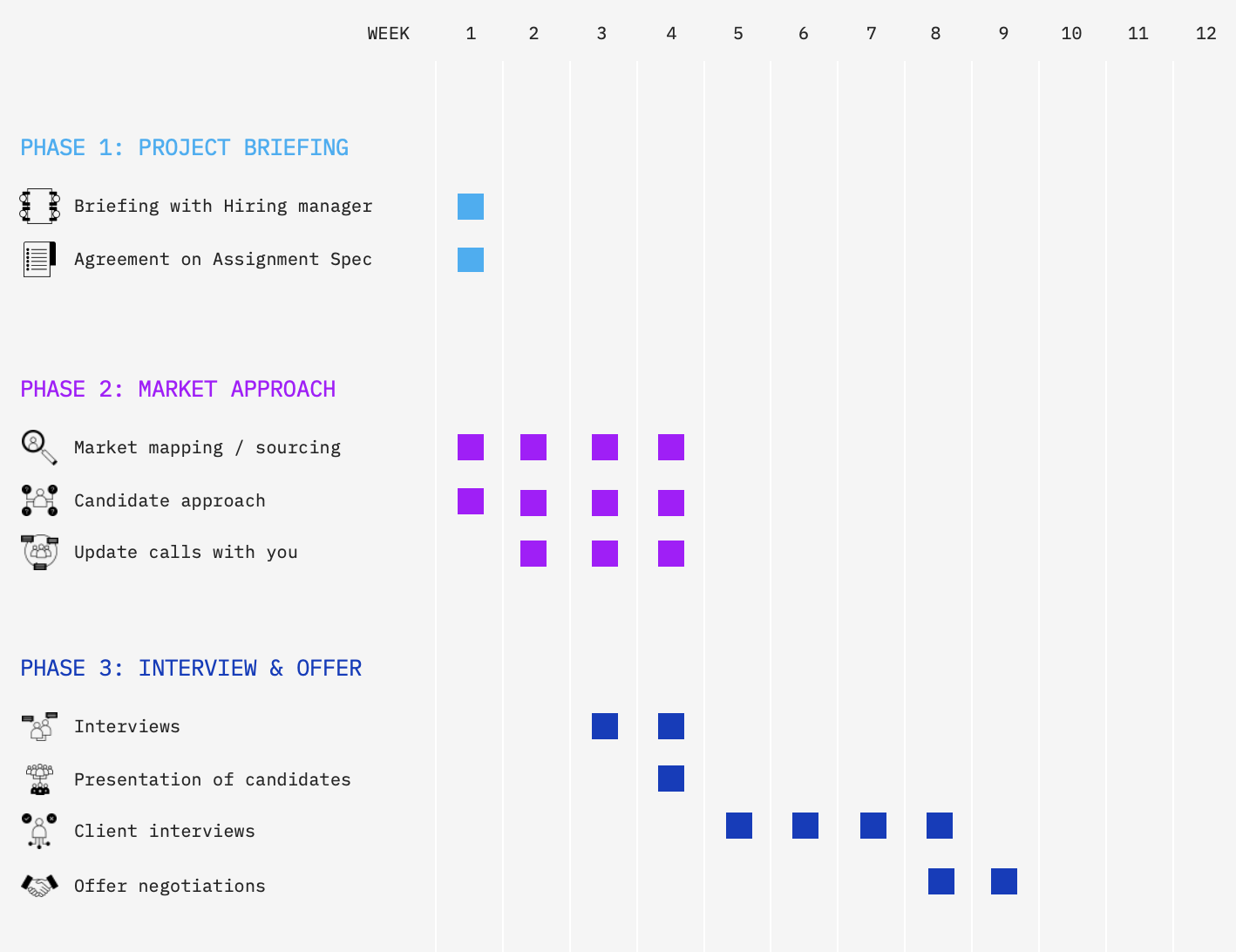Executive searches are intricate processes that demand meticulous planning and execution. If you're wondering how long does an executive search take, several factors influence the timeline. This article will break down the process, its complexities, and what you can expect in terms of duration.
Searching for top-tier talent at the executive level is not a quick endeavor. It requires a strategic approach, thorough vetting, and a deep understanding of both the organization’s needs and the candidate pool. In this guide, we will explore every aspect of the executive search process to provide clarity and insights.
This article is designed to help both hiring managers and candidates understand the timeline and intricacies of executive searches. By the end, you'll have a comprehensive understanding of how long an executive search takes and the critical steps involved.
Read also:Affordable Housing In Queens A Comprehensive Guide To Finding Your Perfect Home
Table of Contents:
- Biography of Executive Search Process
- Overview of the Executive Search Timeline
- Factors Influencing the Duration
- Key Phases of an Executive Search
- Effective Strategies to Shorten the Process
- Statistics and Data on Executive Search Durations
- Common Challenges in Executive Searches
- Role of Technology in Streamlining Searches
- Best Practices for a Successful Search
- Conclusion
Biography of Executive Search Process
Before diving into the specifics of how long does an executive search take, it’s essential to understand the origins and evolution of this process. Executive searches have been a cornerstone of talent acquisition for decades, evolving with the demands of modern organizations.
Here’s a brief overview of the history and development of executive searches:
| Aspect | Details |
|---|---|
| Origins | Executive search firms began to emerge in the mid-20th century, focusing on placing top-tier talent in leadership roles. |
| Evolution | From traditional headhunting to leveraging advanced data analytics, the process has become more sophisticated. |
| Key Players | Industry leaders like Korn Ferry, Heidrick & Struggles, and Spencer Stuart have set the standard for executive searches. |
Overview of the Executive Search Timeline
Understanding the Average Duration
On average, an executive search takes between 3 to 6 months. However, this timeline can vary significantly depending on the role, industry, and specific requirements of the organization. Let’s break this down further:
- Initial Phase: Defining the role and scope (2-4 weeks)
- Candidate Sourcing: Identifying potential candidates (4-6 weeks)
- Interview Process: Conducting interviews and evaluations (4-6 weeks)
- Final Selection: Making an offer and closing the search (2-4 weeks)
Factors Influencing the Duration
Role Complexity
The complexity of the role plays a significant part in determining how long does an executive search take. For example, a CEO search may take longer than a CFO search due to the broader scope of responsibilities and the need for strategic alignment with the board.
Industry and Market Conditions
Market conditions and industry trends also affect the timeline. In a competitive market, sourcing top talent may take longer due to high demand and limited availability.
Read also:Understanding Food Stamp Number A Comprehensive Guide To Snap Benefits
Organization’s Readiness
An organization’s preparedness for the search can either expedite or delay the process. Having a clear job description, defined criteria, and a committed hiring team can significantly reduce the time taken.
Key Phases of an Executive Search
Phase 1: Planning and Strategy
This phase involves defining the scope of the search, setting expectations, and aligning stakeholders. It’s crucial to establish a clear understanding of the role’s requirements and the organization’s long-term goals.
Phase 2: Candidate Identification
Utilizing a combination of traditional and digital methods, search firms identify potential candidates. This phase includes networking, database searches, and reaching out to passive candidates.
Phase 3: Evaluation and Interviews
Once a pool of candidates is identified, the evaluation process begins. This includes multiple rounds of interviews, reference checks, and assessments to ensure the best fit for the role.
Effective Strategies to Shorten the Process
Define Clear Objectives
Having a well-defined job description and clear objectives can significantly reduce the time taken for an executive search. Ensure that all stakeholders are aligned and have a unified vision for the role.
Leverage Technology
Advanced recruitment software and AI-driven tools can streamline the candidate sourcing process. These tools can analyze resumes, assess cultural fit, and predict candidate success, saving valuable time.
Engage with a Reputable Search Firm
Partnering with a reputable executive search firm can accelerate the process. Their expertise and established networks can help identify top talent more efficiently.
Statistics and Data on Executive Search Durations
Average Timeline by Role
According to data from leading search firms, here’s a breakdown of average durations for different executive roles:
- CEO Search: 4-6 months
- CFO Search: 3-5 months
- CHRO Search: 3-4 months
Industry Trends
The tech industry, for instance, tends to have shorter search durations due to the fast-paced nature of the sector. Conversely, traditional industries like manufacturing may take longer due to the specialized skill sets required.
Common Challenges in Executive Searches
Talent Shortages
In certain industries, there may be a shortage of qualified candidates, leading to extended search durations. This is particularly true for niche roles requiring specialized expertise.
Stakeholder Alignment
Misalignment among stakeholders can cause delays in the search process. It’s crucial to ensure that all parties involved have a unified vision and are committed to the process.
Competition for Talent
In a competitive market, attracting top talent can be challenging. Organizations may need to offer more competitive packages or extend the search period to secure the right candidate.
Role of Technology in Streamlining Searches
Data Analytics
Data analytics tools can help identify patterns and trends in candidate behavior, enabling more targeted searches. These tools can predict candidate success and align them with organizational needs.
AI-Powered Platforms
AI-driven platforms can automate routine tasks such as resume screening and initial candidate assessments, freeing up time for recruiters to focus on high-value activities.
Best Practices for a Successful Search
Engage Early
Start the search process early to allow sufficient time for each phase. Engaging with a search firm or internal recruitment team early can help mitigate delays.
Set Realistic Expectations
Setting realistic expectations regarding timelines and candidate availability can prevent frustration and ensure a smoother process.
Focus on Cultural Fit
While technical skills are important, cultural fit should not be overlooked. Ensuring that candidates align with the organization’s values and culture can lead to more successful hires.
Conclusion
In summary, the duration of an executive search can vary widely based on several factors. On average, an executive search takes between 3 to 6 months, but this can be influenced by role complexity, industry conditions, and organizational readiness. By understanding the key phases, leveraging technology, and following best practices, organizations can streamline the process and secure top talent efficiently.
We encourage you to share your thoughts and experiences in the comments section below. Have you been involved in an executive search? What challenges did you face, and how did you overcome them? Additionally, explore our other articles for more insights into talent acquisition and leadership development.



